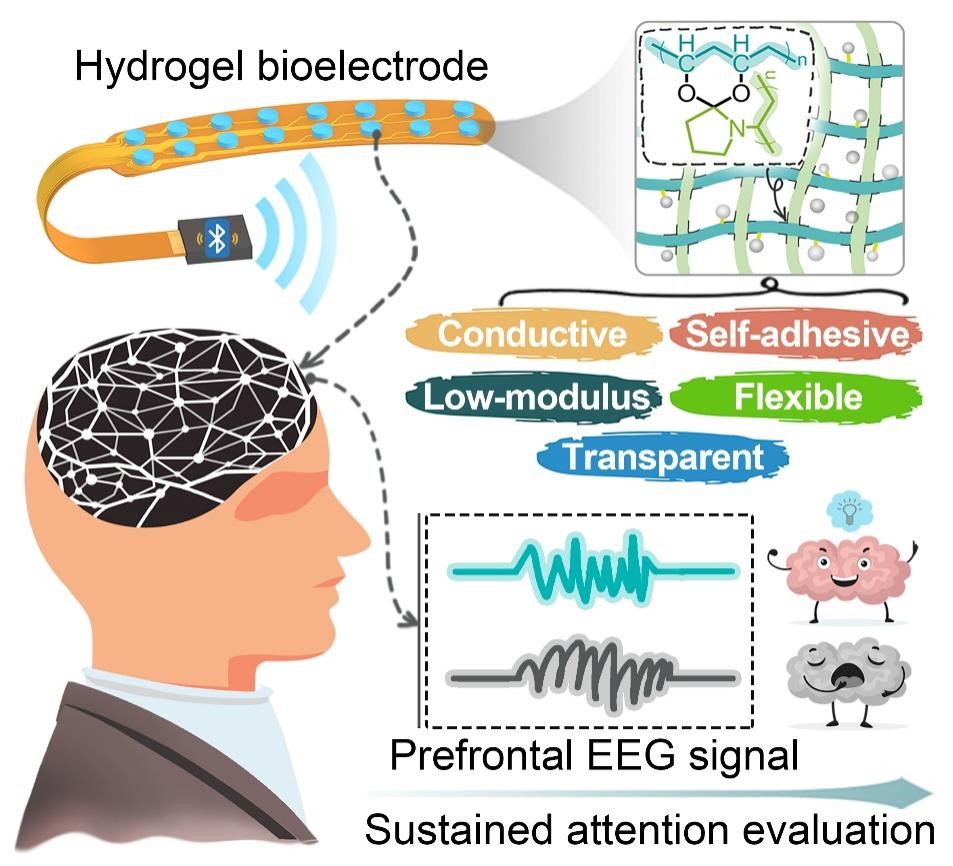Researchers from the Institute of Process Engineering (IPE) of the Chinese Academy of Sciences and Tsinghua University have developed a multifunctional hydrogel electrode with excellent conductivity, adhesion, and anti-interference properties, which can achieve high-quality wireless collection of prefrontal electroencephalography (EEG) signals.
The study was published in Advanced Materials on Jan. 9 (DOI: 10.1002/adma.202209606).
High-quality EEG signals can be used for the diagnosing and treating of brain-related diseases, and evaluating sustained attention levels, which show significant application in fields such as aviation, aerospace, and surgical operations.
However, the existing EEG collection devices, with high power noise and poor anti-interference capability, are bulky and complex, and they can be easily interfered with the movement of the subjects, causing difficulty in collecting high-quality EEG signals.
Moreover, the essential differences in electrical and mechanical characteristics between human tissue and sensing electrodes are also the main reasons for signal distortion. The hydrogel currently used in collection devices can not resist interference factors such as sweat and motion artifacts, unsatisfying the demand for efficient collection.
To solve the above issue, the research team used the nanoparticle-enhancement and homogenous network effect to develop a multifunctional hydrogel. "It has the properties of excellent conductivity, adhesion, flexibility, elasticity, and biocompatibility, which can bridge the difference between human tissue and electrodes, and provide an efficient and stable conduction channel for EEG signal collection," said Prof. BAI Shuo from IPE.
A free-radical oxidation degradation strategy was applied to prepare polydopamine nanoparticles that mimic the adhesive properties of mussels. During the process, the free radicals disrupted the π-stacking in polydopamine aggregates and promoted the conversion of indole units to pyrrole acid units, providing a stronger ion conductivity and tissue adhesion performance for the gel system. In addition, by controlling the cross-linking density, both low-stretch elasticity and high elasticity can be achieved.
According the experiment data, sensing electrodes based on this hydrogel showed an excellent performance in terms of contact impedance and noise power, as well as long-term stability and good resistance to common interference factors such as sweat and motion artifacts.
Using a special algorithm, the high-quality EEG signals can be further converted into a prediction of attention levels with seven categories.
To further explore prediction accuracy, the researchers conducted a five-fold cross-validation experiment on EEG data from 24 volunteer subjects, with an accuracy of up to 91.5%.

Figure. The multifunctional hydrogel sensing interface is used for efficient EEG signal collection and sustained attention level evaluation. (Image by WANG Anhe)
Media Contact:
LI Xiangyu
Public Information Officer
Institute of Process Engineering, Chinese Academy of Sciences, Beijing 100190, P. R. China.
E-mail:xiangyuli@ipe.ac.cn
Tel: 86-10-82544826
 Search
Search




 京公网安备110402500047号
京公网安备110402500047号